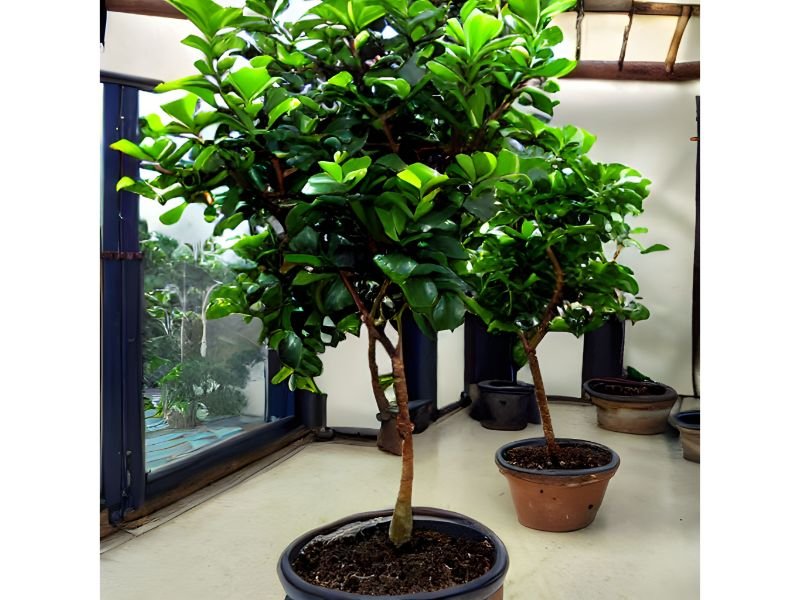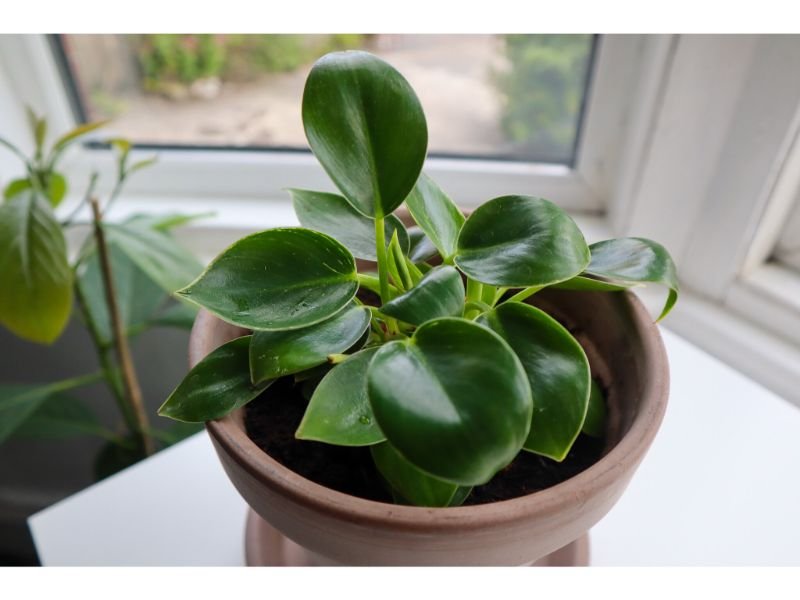A rubber plant, also known as Ficus elastica, is a popular indoor plant that is known for its shiny, large leaves and its ability to thrive in low light conditions. It is native to Southeast Asia and is commonly used as a houseplant or in office settings.
Table of Contents
Reasons for Placing a Rubber Plant at Home

There are many reasons why someone may choose to place a rubber plant in their home.
Firstly, it is an attractive addition to any room and can add a pop of green to an otherwise dull space.
Secondly, it has been shown to have air-purifying qualities, removing harmful chemicals from the air and improving air quality.
Thirdly, it is relatively low-maintenance, making it a great option for busy individuals or those who may not have a green thumb.
Lastly, it is a great way to bring some of the outdoors inside, creating a connection to nature even when you're indoors.
| Property | Value |
|---|---|
| Scientific Name | Ficus elastica |
| Common Name | Rubber Plant |
| Family | Moraceae |
| Native Range | Southeast Asia |
| Height | Can reach up to 60 ft in its native habitat, but typically grows to around 6-10 ft as a houseplant. |
| Leaves | Large, glossy, and oval-shaped, typically 6-12 inches in length. |
| Leaf Color | Dark green |
| Flowers | Insignificant, not typically seen on houseplants. |
| Light Requirements | Prefers bright, indirect light but can tolerate low light conditions. |
| Water Requirements | Water when the top inch of soil is dry, do not let the soil become waterlogged. |
| Humidity Requirements | Tolerates normal indoor humidity levels. |
| Soil Requirements | Well-draining, fertile potting soil. |
| Propagation | Propagated from stem cuttings. |
Suitable Locations Inside the Home

In living rooms
Living rooms are a great place to place a rubber plant, as they typically receive a lot of natural light. A rubber plant can add a touch of greenery and natural beauty to a living room, helping to create a warm and inviting atmosphere.
Cons: It may take up floor space, and direct exposure to strong light sources or fluctuations in temperature could harm the plant.
In bathrooms
Bathrooms are a good place for a rubber plant as they typically receive a lot of indirect light and have a high humidity level, which is ideal for rubber plants. A rubber plant can add a touch of nature to a bathroom, making it a more relaxing and inviting space.
Cons: Excessive moisture could lead to root rot, and fluctuations in temperature could harm the plant.
In bedrooms
Bedrooms can be a suitable place for a rubber plant, especially if the room receives a lot of indirect light. A rubber plant can help to create a calming and relaxing atmosphere in a bedroom, making it a peaceful place to sleep.
Cons: Direct exposure to strong light sources or fluctuations in temperature could harm the plant, and it may take up valuable floor space.
In kitchens
Kitchens can also be a good place for a rubber plant, as long as the room receives enough natural light. A rubber plant can add a touch of greenery and natural beauty to a kitchen, making it a more inviting and welcoming space.
Cons: Exposure to cooking fumes and fluctuations in temperature could harm the plant, and it may take up valuable counter or floor space.
Balcony
Balconies can be a great place for a rubber plant, especially if the plant will receive a lot of natural light. A rubber plant on a balcony can bring a touch of nature to an outdoor space and can provide fresh air to improve overall indoor air quality.
Cons: Exposure to extreme temperatures and weather conditions, such as strong winds or heavy rain, could harm the plant.
Porch
Porches can also be a good place for a rubber plant, especially if the plant will receive a lot of natural light. A rubber plant on a porch can bring a touch of greenery to an outdoor space and can provide fresh air to improve overall indoor air quality.
Cons: Exposure to extreme temperatures and weather conditions, such as strong winds or heavy rain, could harm the plant.
Window
Windows can also be a good place for a rubber plant, especially if the plant will receive a lot of natural light. A rubber plant near a window can bring a touch of nature to a room and can provide fresh air to improve overall indoor air quality.
Cons: Direct exposure to strong light sources or fluctuations in temperature could harm the plant, and it may take up valuable window space.
Other Factors to Consider While Placing Rubber Plants in Home

Natural Lighting
It’s important to consider the amount of natural light a rubber plant will receive when placing it in a home. Rubber plants prefer bright, indirect light, but can tolerate low-light conditions. If a room does not receive enough natural light, it may be necessary to provide supplemental lighting to keep the plant healthy.
Light Exposure
In addition to natural light, it’s important to consider the location of a rubber plant in relation to other sources of light, such as lamps or overhead lighting. Direct exposure to strong light sources can cause the leaves to yellow or burn, so it’s best to place the plant in a location where it will receive bright, indirect light.
Watering Requirements
Rubber plants need to be watered regularly to keep them healthy, but it’s important not to overwater them, as this can lead to root rot. It’s best to water the plant when the top inch of soil is dry and to allow the soil to drain thoroughly after watering.
Temperature Consistency
Rubber plants prefer to be in rooms with a consistent temperature, between 65-75°F. They are sensitive to sudden temperature changes, so it’s important to keep them away from sources of heat or cold that may cause the temperature to fluctuate.
Pot Size

When choosing a pot for a rubber plant, it’s important to consider the size of the plant and the pot’s drainage capabilities. The pot should be slightly larger than the plant’s root system, with plenty of room for growth. Additionally, the pot should have drainage holes to prevent water from becoming trapped in the soil.
Humidity Level
Rubber plants prefer normal indoor humidity levels but can tolerate some variation. However, if the humidity level is too low, the leaves may become dry and brittle. Misting the leaves regularly or placing a tray of water near the plant can help to increase the humidity level.
Pruning and Propagation
Rubber plants can be pruned to control their size and shape, and can also be propagated from stem cuttings. Pruning should be done during the growing season and can help to encourage healthy new growth. Propagation is typically done in the spring or summer when the plant is most actively growing.
Conclusion
In conclusion, a rubber plant is a versatile and attractive addition to any home, offering a range of benefits, including improving air quality and adding a touch of greenery. When considering where to place a rubber plant in a home, it’s important to consider factors such as natural lighting, temperature consistency, and humidity levels. By taking these factors into account and providing proper care, it’s possible to enjoy a healthy and thriving rubber plant for many years to come. Whether placed in a living room, bathroom, bedroom, or kitchen, a rubber plant can bring a touch of nature and a pop of color to any space.

Gardening is my passion and growing plants indoors has always been a stress relief for me. Grow a banana tree in my apartment once (although failed to produce bananas).






